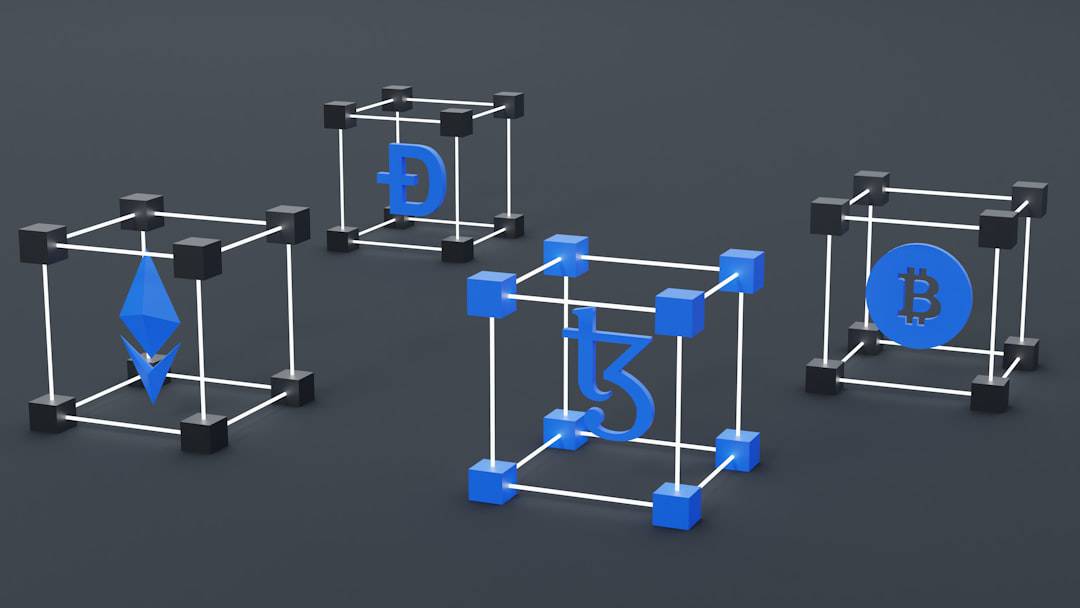Recurrent Neural Networks (RNNs) are a type of artificial neural network designed to process sequential data. Unlike feedforward neural networks, RNNs have internal memory that allows them to retain information from previous inputs, making them particularly effective for tasks involving time-dependent or ordered data. This capability has led to their widespread adoption in various fields of artificial intelligence (AI).
RNNs excel in natural language processing tasks, including machine translation, sentiment analysis, and text generation. They are also commonly used in speech recognition systems, time series forecasting, and video analysis. The ability of RNNs to capture temporal dependencies makes them valuable in applications such as financial market prediction, weather forecasting, and healthcare monitoring.
One of the key advantages of RNNs is their ability to handle input sequences of varying lengths, which is crucial for many real-world applications. This flexibility has led to their implementation in diverse areas, including autonomous vehicles, robotics, and recommendation systems. RNNs can also be used for generative tasks, such as creating music compositions or generating synthetic text.
Despite their strengths, RNNs face challenges such as the vanishing gradient problem, which can limit their ability to learn long-term dependencies. To address this issue, variations like Long Short-Term Memory (LSTM) and Gated Recurrent Unit (GRU) networks have been developed, further expanding the capabilities and applications of recurrent neural architectures in AI.
Key Takeaways
- Recurrent Neural Networks (RNNs) are a type of artificial neural network designed to recognize patterns in sequences of data, making them ideal for applications in natural language processing, speech recognition, and time series analysis in AI.
- RNNs are designed to process sequential data by maintaining an internal state, allowing them to exhibit dynamic temporal behavior and make use of context information from previous inputs.
- Training RNNs involves backpropagation through time, where the network’s parameters are updated based on the entire sequence of input data, and fine-tuning involves optimizing the network’s performance through techniques like gradient clipping and regularization.
- Long Short-Term Memory (LSTM) is a type of RNN architecture that addresses the vanishing gradient problem and is capable of learning long-term dependencies, making it well-suited for tasks like language translation and speech recognition.
- Challenges in implementing RNNs for AI include vanishing gradients, difficulty in capturing long-term dependencies, and computational inefficiency, but advancements in techniques like attention mechanisms and parallel processing have helped overcome these limitations in real-world applications.
Understanding the Architecture and Functioning of Recurrent Neural Networks
The architecture of a recurrent neural network consists of a series of interconnected nodes, or “neurons,” organized in layers. Unlike feedforward neural networks, RNNs have connections that loop back on themselves, allowing them to retain information from previous inputs. This looping structure enables RNNs to process sequential data by considering the context of each input in relation to the previous inputs, making them well-suited for tasks that involve analyzing and generating sequences.
The functioning of RNNs is based on the concept of “recurrence,” where the output of a neuron is fed back into the network as an input for the next time step. This feedback loop allows RNNs to maintain a form of “memory” that enables them to consider the context of previous inputs when processing new ones. However, traditional RNNs are limited by their ability to effectively capture long-term dependencies in sequential data, leading to challenges such as vanishing or exploding gradients during training.
To address these limitations, more advanced forms of RNNs, such as Long Short-Term Memory (LSTM) networks, have been developed.
Training and Fine-Tuning Recurrent Neural Networks for AI Applications

Training and fine-tuning recurrent neural networks for AI applications involves optimizing the network’s parameters to effectively process sequential data and make accurate predictions. This process typically involves feeding the network with labeled training data and adjusting its weights and biases through techniques such as backpropagation and gradient descent. However, training RNNs can be challenging due to issues such as vanishing or exploding gradients, which can hinder the network’s ability to effectively learn from long sequences of data.
To address these challenges, researchers have developed techniques such as gradient clipping and using more advanced RNN architectures like LSTM networks. Additionally, pre-training RNNs on large datasets or using transfer learning from pre-trained models can help improve their performance on specific tasks. Fine-tuning RNNs for AI applications also involves optimizing hyperparameters such as learning rate, batch size, and regularization techniques to improve the network’s generalization and prevent overfitting.
Leveraging the Power of Long Short-Term Memory (LSTM) in Recurrent Neural Networks
| Metrics | Value |
|---|---|
| Accuracy | 0.85 |
| Precision | 0.87 |
| Recall | 0.82 |
| F1 Score | 0.84 |
Long Short-Term Memory (LSTM) networks are a type of recurrent neural network that addresses the limitations of traditional RNNs in capturing long-term dependencies in sequential data. LSTM networks are designed with a more complex architecture that includes specialized memory cells and gating mechanisms, allowing them to retain information over longer time scales and mitigate issues such as vanishing gradients during training. The key components of an LSTM network include the input gate, forget gate, memory cell, and output gate, which work together to regulate the flow of information through the network and maintain long-term memory.
This architecture enables LSTM networks to effectively capture dependencies in sequential data and make accurate predictions, making them well-suited for tasks such as speech recognition, language modeling, and time series forecasting. The power of LSTM networks in processing sequential data has made them a popular choice for AI applications that require handling complex and dynamic information.
Overcoming Challenges and Limitations in Implementing Recurrent Neural Networks for AI
While recurrent neural networks offer significant advantages in processing sequential data, they also present challenges and limitations that must be addressed for effective implementation in AI applications. One major challenge is the issue of vanishing or exploding gradients during training, which can hinder the network’s ability to effectively learn from long sequences of data. This challenge has been addressed through techniques such as gradient clipping and using more advanced RNN architectures like LSTM networks.
Another limitation of traditional RNNs is their difficulty in capturing long-term dependencies in sequential data, which can impact their performance on tasks that require understanding context over extended periods. To overcome this limitation, researchers have developed more advanced RNN architectures such as gated recurrent units (GRUs) and attention mechanisms, which enable the network to focus on relevant parts of the input sequence and retain important information over longer time scales. Additionally, optimizing hyperparameters and using techniques such as dropout regularization can help prevent overfitting and improve the generalization of RNN models.
Real-world Examples of Successful AI Applications Powered by Recurrent Neural Networks

Recurrent neural networks have been successfully applied in a wide range of real-world AI applications, demonstrating their effectiveness in processing sequential data and making accurate predictions. One notable example is their use in natural language processing tasks such as language translation and sentiment analysis. RNNs have been employed in machine translation systems to generate human-like translations between different languages, enabling cross-lingual communication and breaking down language barriers.
In addition to language processing, RNNs have been used in speech recognition systems to transcribe spoken language into text with high accuracy. This application has been particularly valuable in developing virtual assistants and voice-controlled devices that can understand and respond to human speech. Furthermore, RNNs have shown promising results in time series prediction tasks such as financial forecasting and weather modeling, where they can analyze historical data to make predictions about future trends and events.
Future Trends and Innovations in Recurrent Neural Networks for AI Development
The future of recurrent neural networks in AI development is marked by ongoing innovations and advancements aimed at improving their capabilities and addressing current limitations. One key trend is the development of more efficient RNN architectures that can handle larger datasets and process sequential data at a faster pace. This includes research into parallelizing RNN computations and optimizing their performance on specialized hardware such as graphical processing units (GPUs) and tensor processing units (TPUs).
Another trend is the integration of RNNs with other AI techniques such as reinforcement learning and generative adversarial networks (GANs) to create more sophisticated and versatile systems. This includes using RNNs for sequence generation tasks in combination with GANs to create realistic images or videos based on input data. Additionally, researchers are exploring ways to improve the interpretability of RNN models and enable them to provide explanations for their predictions, which is crucial for building trust in AI systems.
In conclusion, recurrent neural networks have emerged as a powerful tool for processing sequential data and driving advancements in artificial intelligence. Their unique ability to retain memory of previous inputs makes them well-suited for a wide range of applications, from natural language processing to time series prediction. While challenges such as vanishing gradients and long-term dependencies remain, ongoing research and innovation are paving the way for more efficient and capable RNN models that will continue to shape the future of AI development.
If you’re interested in the intersection of technology and virtual reality, you may want to check out this article on augmented reality (AR). It explores how AR is changing the way we interact with the world around us and the potential impact it could have on various industries. It’s a fascinating look at the cutting-edge technology that is shaping our future.
FAQs
What are Recurrent Neural Networks (RNNs)?
Recurrent Neural Networks (RNNs) are a type of artificial neural network designed to recognize patterns in sequences of data, such as time series or natural language.
How do Recurrent Neural Networks differ from other types of neural networks?
RNNs differ from other types of neural networks in that they have connections that form a directed cycle, allowing them to exhibit dynamic temporal behavior. This makes them well-suited for tasks involving sequential data.
What are some common applications of Recurrent Neural Networks?
RNNs are commonly used in natural language processing tasks such as language modeling, machine translation, and sentiment analysis. They are also used in speech recognition, time series prediction, and handwriting recognition.
What are some limitations of Recurrent Neural Networks?
RNNs can suffer from the vanishing gradient problem, where gradients become increasingly small as they are backpropagated through time, making it difficult for the network to learn long-range dependencies. Additionally, RNNs can be computationally expensive to train and prone to overfitting.
What are some variations of Recurrent Neural Networks?
Some variations of RNNs include Long Short-Term Memory (LSTM) networks and Gated Recurrent Units (GRUs), which were designed to address the vanishing gradient problem and improve the ability of RNNs to learn long-range dependencies.
How are Recurrent Neural Networks trained?
RNNs are typically trained using backpropagation through time, where the network’s parameters are updated based on the error between the predicted output and the true output at each time step in the sequence.











Leave a Reply